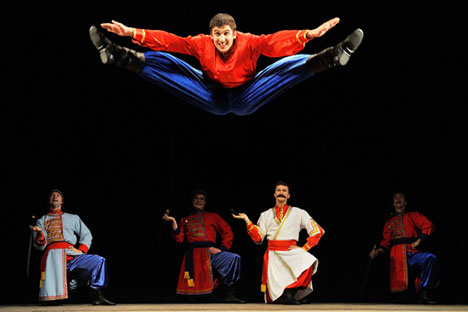
Speech Krasnoyarsk State Academic Dance Company of Siberia named Michael Godenko.
PhotoxpressThis ensemble was founded by Soviet choreographer Mikhail Godenko in 1960; after his death in 1991, he was succeeded as the artistic director by Igor Moiseyev's grandson Vladimir, a former soloist at the Bolshoi Theater.
The company has toured more than 70 countries and received much acclaim from critics. The ensemble's trademark style is built on imagery, emotion, high artistry, and sometimes most unexpected combinations of elements. For example, a combination of a traditional khorovod (ring dance) and modern dance – and even acrobatics – in one routine.
To create its routines, the group draws inspiration not only from Russian culture. As Vladimir Moiseyev recalls, Godenko came up with the "Poultry-Yard" routine while watching old Disney cartoons. The dance entered the repertoire half a century ago and is still a hit for the ensemble.
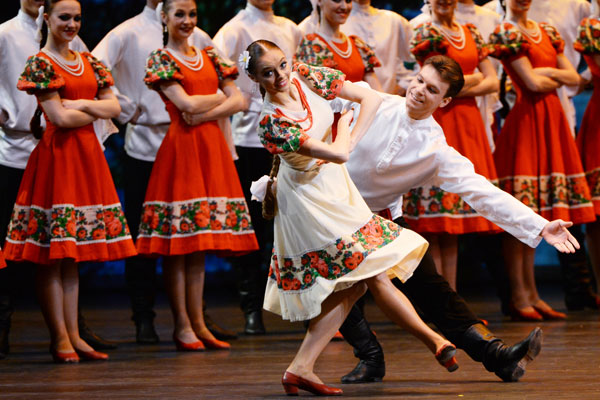
Members of the Igor Moiseyev Folk Dance Company perform the Russian dance entitled "Summer" at the Bolshoi Theatre in Moscow. Source: Vladimir Vyatkin / RIA Novosti
Ballet dancer, teacher and choreographer Igor Moiseyev formed the Soviet Union's first professional dance ensemble as early as in 1937. He lived for 101 years and continued to lead his group almost until the last days of his life, remaining a model of elegance, education, erudition and refined taste.
The ensemble's repertoire includes Russian, Ukrainian, Belarusian, Moldovan, Lithuanian and other dances. It performs a Crimean Tatar dance, and, of course, the "Tsiganochka," the "Mazurka," the "Krakowiak" and the "Polonaise.”
The Moiseyev Ensemble's trademark style is the creation of suites of dances, for example, "Hiu Waltz: An Estonian Suite of Three Dances" or the Armenian "Manuka" of four dances. There is even a Hungarian "Maiden’s Dance with Bottles on the Head" in the ensemble's repertoire.
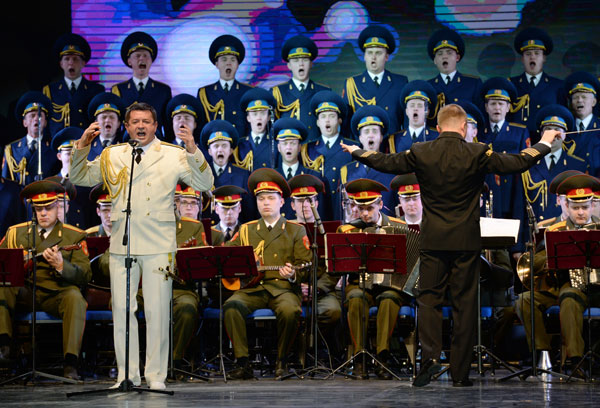
Members of the Alexandrov Russian Army song and dance ensemble perform at the VII International Winter Festival Arts. Source: Vladimir Vyatkin / RIA Novosti
The most famous army band in the world. The ensemble's full line-up – 120 people – includes a choir, orchestra, dancers and singers.
"On the road, we always perform local songs, too,” said the company's leader Leonid Malev. “In Hungary, for example – ‘Czardas.’ Just not with a violin but with a balalaika. As many countries as there are on the tour – that’s in how many languages we sing. That's what the Alexandrov is loved for, among other things. When we sing in Russian, we run subtitles on the screen," he said.
The ensemble’s dance repertoire includes folk dances from Russia and across the world, soldiers' dances, as well as the famous "Kalinka."
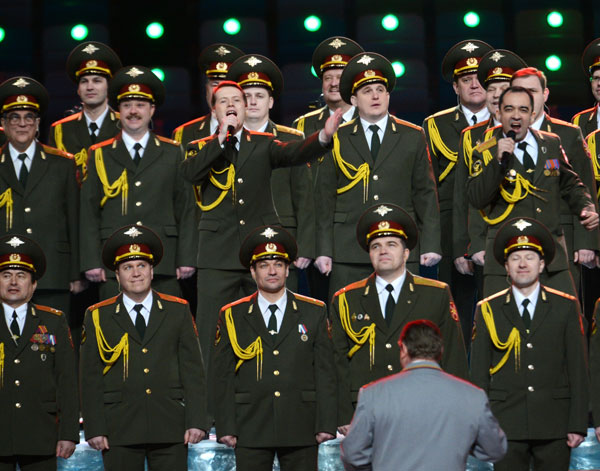
The Song and Dance Ensemble of the Russian Interior Ministry Troops performs before the opening ceremony of the XXII Olympic Winter Games in Sochi. Source: RIA Novosti/Vladimir Astapkovich
This ensemble’s repertoire partly overlaps with that of the Alexandrov company, but there are differences that fans love – the collective is very sensitive to the international pop charts and instantly releases cover versions.
For example, a while ago the ensemble released Tom Jones' "Sex Bomb" and Merle Travis' "Sixteen Tons."
In 2013, the ensemble performed an uplifting cover version of Daft Punk's "Get Lucky" and generated over six million views on YouTube. At the Olympics in Sochi, they sang the same song exclusively for the NBC channel.
The company's dance program includes Ukrainian, Cossack, military, Gypsy and Irish dances.
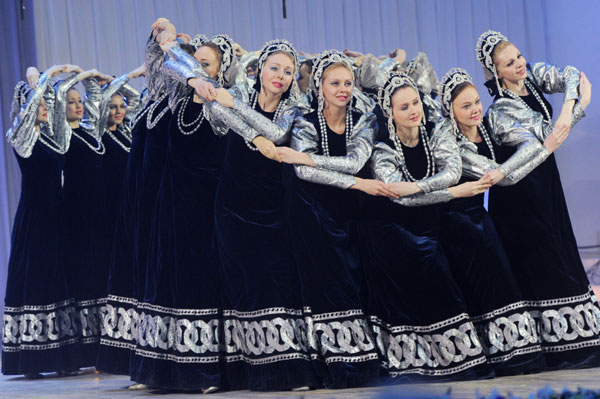
The Russian Tsepochka (Chain) dance performed by the Nadezhdina Beryozka State Academic Ensemble. Source: Vladimir Vyatkin / RIA Novosti
Founded in 1948, the original ensemble was entirely female. As its founder Nadezhda Nadezhdina put it, the "poetic image of a Russian girl is at the center of all our work, no matter if it is a merry dance or a lyrical khorovod."
Although it now features men, too, the ensemble’s main characters and performers are still girls – beautiful, graceful, soulful.
Beryozka's dances are real choreographic spectacles, each with its own drama. Their most popular numbers include "Seasons," "Russian Porcelain," and a dance-and-game routine called "Moscow Courtyard."
All rights reserved by Rossiyskaya Gazeta.
Subscribe
to our newsletter!
Get the week's best stories straight to your inbox